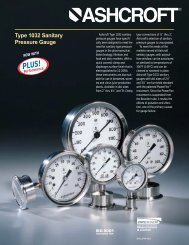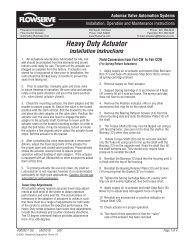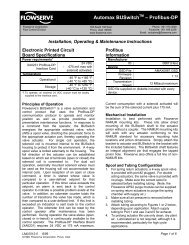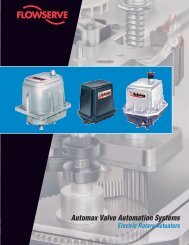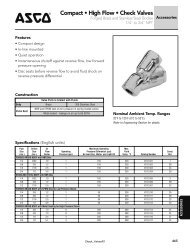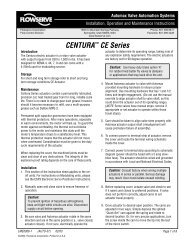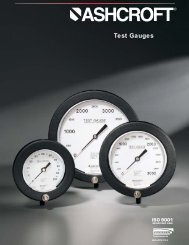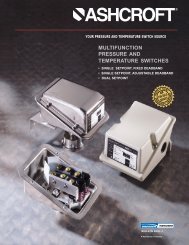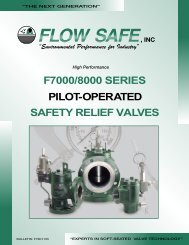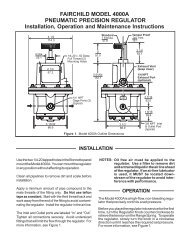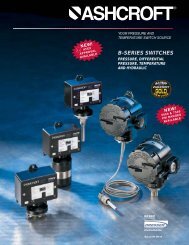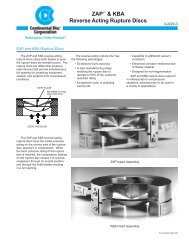Multi-turn actuators - Tri-State Technical Sales Corp.
Multi-turn actuators - Tri-State Technical Sales Corp.
Multi-turn actuators - Tri-State Technical Sales Corp.
Create successful ePaper yourself
Turn your PDF publications into a flip-book with our unique Google optimized e-Paper software.
Manual operation<br />
Electric <strong>actuators</strong> are always equipped with a handwheel.<br />
During commissioning, the actuator is operated manually by<br />
the handwheel for the purpose of setting the end<br />
positions.<br />
If the power supply fails, the valve can be operated via the<br />
handwheel. The manual drive is engaged via a change-over<br />
mechanism, the connection to the motor is disconnected at<br />
the same time. The handwheel does not rotate during motor<br />
operation.<br />
If the electric motor is switched on, the manual drive is<br />
automatically disconnected, and the transmission of torque<br />
between motor and gearing is restored.<br />
Switching off in the end positions<br />
Depending on the design of the valve and/or the application,<br />
the actuator is switched off in the end positions according<br />
to one of the following procedures stipulated by the valve<br />
manufacturer:<br />
■<br />
■<br />
Limit seating, i.e. at one of the set switching positions<br />
Torque seating. This type of seating is used if the valve has<br />
to be moved to end position CLOSED at a defined torque.<br />
AUMA <strong>actuators</strong> contain two independent measuring systems,<br />
limit switching and torque switching<br />
(see page 14).<br />
The type of seating has to be considered in the actuator<br />
controls.<br />
Limit seating<br />
n<br />
P<br />
Output speed n depending on the travel<br />
The actuator runs at nominal output speed up to tripping<br />
point P. When setting P, you have to account for the overrun<br />
of the actuator. The overrun is generated by the inertia of<br />
both the actuator and the valve and the delay time of the<br />
controls.<br />
Torque seating<br />
T<br />
[1]<br />
Torque T depending on the travel<br />
[1] Set tripping torque<br />
When reaching end position CLOSED the torque increases<br />
within the valve seat until the actuator is switched off after<br />
reaching the set value.<br />
| 13



